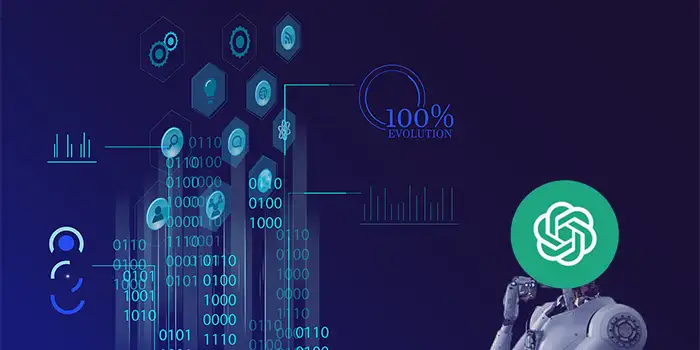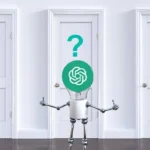I’ve been experimenting with ChatGPT for a very long time already and I’ve witnessed how it evolves and improves through our interactions. I was just wondering if AI models like ChatGPT learn from us, that’s why I’ve made some observations and experiments.
ChatGPT actively learns from user interactions within the dialogue. It does not have the ability to learn from new inputs or experiences like a human because it is limited to the context of the ongoing dialogue and does not extend to broader or long-term learning. It can’t even retain knowledge from previous conversations when deleted.
In this article, you’ll learn:
Does ChatGPT Learn from Users?
When I started using and experimenting with ChatGPT, I saw how super smart this AI language model is. It actively learns from the things people say to it in conversations.
It really pays close attention to what we tell it and tries to improve its responses based on our feedback, corrections, and suggestions.
However, it’s important to note that ChatGPT has certain limitations, it can only learn from what we say in the ongoing conversation. It can’t learn from new things or experiences like a human can. Think of it like ChatGPT’s learning is stuck inside the chat box.
Let’s say you’re talking to ChatGPT about the solar system, and you’re having a blast asking questions and sharing information. ChatGPT is learning from the conversation that you have and it’s trying its best to give you awesome answers.
But here’s the thing, if you come back the next day and start a new conversation about unicorns, ChatGPT won’t remember a thing about your solar system in your new chat.
It can’t connect the dots between different conversations or learn from them in the long term. It’s like starting with a blank slate every time we chat!
Another important point here is that even if you don’t delete the conversation in one box, ChatGPT cannot remember or recall what you discuss in other chat boxes or sessions.
Each chat box or session operates independently. It does not have access to the content or context of conversations held in different chat boxes.
This only means that ChatGPT doesn’t extend to broader or long-term retention and information. While the conversation provides some continuity, each interaction is treated as a separate session, and ChatGPT doesn’t have the ability to fully integrate past discussions into new ones.
If you want ChatGPT to remember your previous discussion and continue where you left off, it’s important not to delete your conversation. By keeping your conversation intact, ChatGPT retains the context and Knowledge shared in previous exchanges.
In this way, you can come back to chat about the same topic, ChatGPT will have a better understanding of the discussion and build upon it.
As you can see, the design of ChatGPT ensures privacy and data protection, as ChatGPT does not store personal information or specific details from previous interactions.
So don’t worry, your secrets are safe with ChatGPT! It’s not keeping a diary of your chats. Once the conversation is over, it’s like it never happened.
Are User Interactions the Primary Source of Learning for ChatGPT
User interactions are an important source of learning for ChatGPT, but they are not the sole or exclusive source. ChatGPT undergoes a two-step training process: pre-training and fine-tuning.
While user interactions contribute significantly to the fine-tuning phase, pre-training on a large corpus of publicly available text from the internet forms the initial foundation of the model’s knowledge.
During the pre-training phase, ChatGPT learns patterns, language structure, and a broad range of knowledge from the vast amount of test data it is exposed to.
This process helps the AI chatbot develop a general understanding of language and acquire a wide array of information.
This pre-training knowledge is not specific to user interactions or personalized experiences. It’s more like a starting point for ChatGPT to build upon.
The real magic happens during the fine-tuning phase. This is where ChatGPT is trained on custom datasets that include user interactions.
This process helps align the model’s responses with user expectations and refine its performance.
Through reinforcement learning from human feedback (RLHF), ChatGPT learns from the feedback provided by users, incorporating their corrections and suggestions into its training process.
User Influence on ChatGPT’s Intelligence
User influence plays a crucial role in shaping and enhancing ChatGPT’s intelligence. Through user interactions and feedback, ChatGPT will learn from the collective knowledge, preferences, and expertise of its users. It will then help refine and improve its responses over time.
Here are the ways how users influence ChatGPT’s intelligence:
1. Knowledge Expansion
Users offer their distinct viewpoints, thoughts, and questions to talk via ChatGPT. ChatGPT learns about a variety of subjects and facts that it would not have come across during pre-training through these exchanges.
Users contribute to the growth of ChatGPT’s knowledge base by introducing novel ideas, imparting specialized topic expertise, and posing difficult queries.
2. Correction and Refinement
When ChatGPT delivers inaccurate or unsatisfactory results, users frequently offer insightful feedback.
Users may help ChatGPT improve its comprehension and the precision of upcoming replies by pointing out errors, proposing corrections, or rating the quality of responses. This recurrent feedback loop enables ChatGPT to improve progressively and learn from its errors.
3. Contextual Adaptation
ChatGPT is exposed to many conversational situations through user interactions, including nuances in language use, cultural allusions, and environmental clues.
ChatGPT improves its ability to hone its replies to unique user demands by monitoring and studying these various scenarios. Conversations become more individualized and appropriate for the situation as it learns to adjust its tone, manner, and degree of formality.
4. Bias Mitigation
Feedback from users aids in reducing any biases in ChatGPT’s replies. Instances, when the model could accidentally reflect bias, can be found and pointed out by users, allowing engineers to address and fix the problems.
By actively integrating users in this process, ChatGPT can continue to develop and work to ensure that all interactions are fair, inclusive, and neutral.
5. Continuous Learning
Learning using ChatGPT is a continuous, iterative process. The system has more opportunities to learn, adapt, and fine-tune the replies the more people engage with it.
ChatGPT can continually update its knowledge and enhance its performance as users give comments and participate in meaningful discussions, resulting in more informed and precise replies over time.
What Data Does ChatGPT Gather from User Interactions
When the user and ChatGPT interact, the AI chatbot gathers specific data to enhance its learning. However, ChatGPT’s process is designed with privacy and data protection in mind. It does not have access to personal data about individual users or specific conversations.
Here are the types of data that ChatGPT gathers:
- User Feedback: The effectiveness of the model-generated replies is evaluated by users. If the model’s options are insufficient, they might choose the most suitable response from the list or offer their own. The reward signal from this feedback encourages reinforcement learning.
- Rankings: Users assess the effectiveness or quality of the model’s outputs. This score reveals which comments are most popular with users and directs reinforcement learning to produce better responses in the future.
- Corrections and Suggestions: Users may improve the accuracy and relevancy of the replies by pointing out errors, making edits, or providing more details. These improvements and ideas help ChatGPT’s comprehension and knowledge be improved and refined.
- Contextual Cues: Contextual signals from user interactions, such as conversational context, particular requests, or pertinent information, affect ChatGPT’s comprehension and subsequent answers. These indications allow ChatGPT to customize its answers more effectively.
One thing I’ve learned about ChatGPT is that user interactions are anonymized and stripped of personally identifiable information to protect user privacy. It also does not retain personal data or specific details about individual users or conversations.
Final Thoughts
So again, ChatGPT does actively learn from user interactions within the context of ongoing conversations, it doesn’t possess the ability to retain knowledge or learn in the same way humans do.
We, as users, also play a vital role in shaping and refining ChatGPT’s responses through our feedback and suggestions. We really contribute to its learning process, helping it to generate more accurate and relevant answers.
The learning that you gain from this article will help you realize the opportunity to appreciate the strengths and limitations of AI technology.
The knowledge of this AI language model is context-bound and doesn’t encompass a deep understanding of the world. It’s a reminder for us of the unique capabilities and experiences that humans bring to the table.










